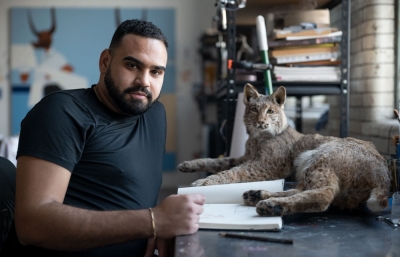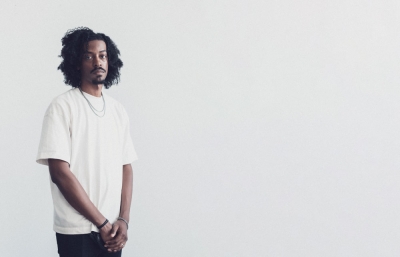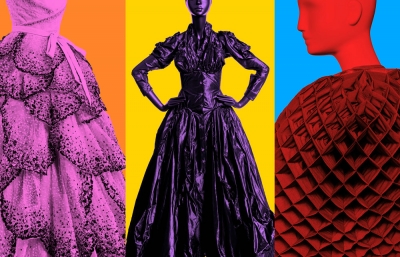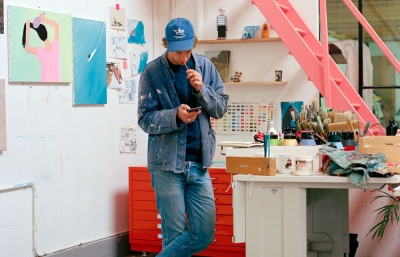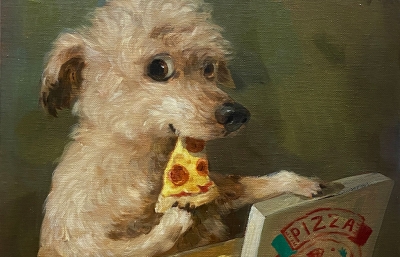On a flight back from Paris to San Francisco, I watched JR’s brilliant 2018 Academy Award-nominated documentary film, Faces Places. The timing was appropriate—JR had just completed a massive public art project at the foot of the Louvre to celebrate the 30th anniversary of the museum’s “pyramid” entrance; the film’s other star, New Wave director Agnès Varda had just passed within that 24 hours; and Nuart Aberdeen was set to present a special screening of the film at their 2019 festival. In bringing together two popular French artists and filmmakers on a journey through the countryside, unveiling and relating stories about France in their own way, it’s like a passing of the baton. An “old-school” storyteller learning from, and teaching, JR, the contemporary bard, on how to tell a story through a portrait. Like so many, I absolutely loved the film because I have a rather healthy obsession with the idea of “storytelling,” as well as how to approach re-examining those moments. 
JR is obviously dedicating his career to telling these underappreciated stories, and that approach is special when put into the context of a process achieved in public spaces. Nuart’s inclusion of the film was an ideal addition to this year’s Aberdeen festival because the conversation about public and street art centers on collective storytelling. What are the things we feel, see, and want to interact with? What does un-curated, honest mark-making look like? While not insisting that street art is some sort of bastion of truth, I marvel at those unsanctioned moments of creativity that gauge the temperature of a culture. I believe in re-thinking the ways we tell our histories, making inclusive choices to create a more complete and encompassing picture.
Not surprisingly, that is what Robert Williams was doing with Juxtapoz 25 years ago; not through a lens of street art, but just outsider art in general. He knew there were stories that needed to be told, accounts of artists and movements that were not being included in the academic lexicon recorded in history books. The stories of comic books, poster designers, psychedelic artists, album covers… the art we live with. In his first editor’s letter in 1994, Robert wrote, “One factor of culture that has been excluded from the art world is the cartoon, yet cartoon imagery is the most powerful form of graphics in the twentieth century. With this magazine, this wrong will be righted.” Replace cartoon with street art, graffiti, poster art… hell, replace it with art made by women, people of color, indigenous cultures, etc. The idea that history needs to stay as is, without the ability to reimagine, seems ridiculous, and there are many of us working on changing paradigms. 
A favorite sentiment in the Summer 2019 issue was a description by cover artist, Robin F. Williams, about her paintings. “I want to compress time in these paintings by using multiple markers within one piece, either through form or narrative… The goal is not to make a painting that feels timeless, but to make a painting that feels outside of time. It’s a way to discuss how images of women have consistently been so problematic.” I just love that idea; the subtle examination of time and history, a re-examination and evolution. Not every feature in this issue is an overt challenge to the status quo, but look for the hints, clues and gems in each piece.
Enjoy the summer reading. Buy the Summer 2019 issue here.
above image: Vaping in the Rain, 2019, courtesy of Robin F Williams, Various Small Fires and PPOW, New York

